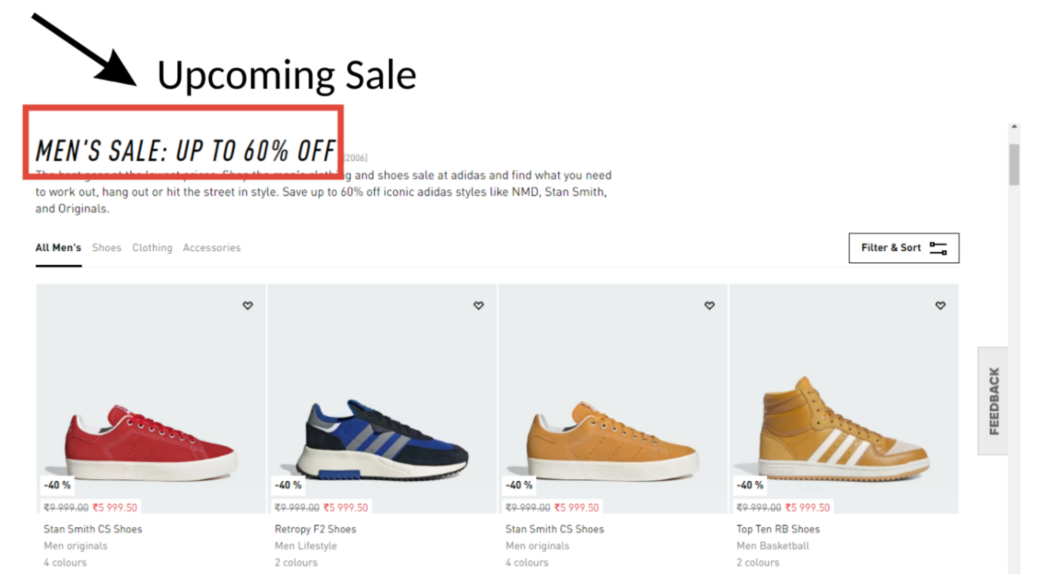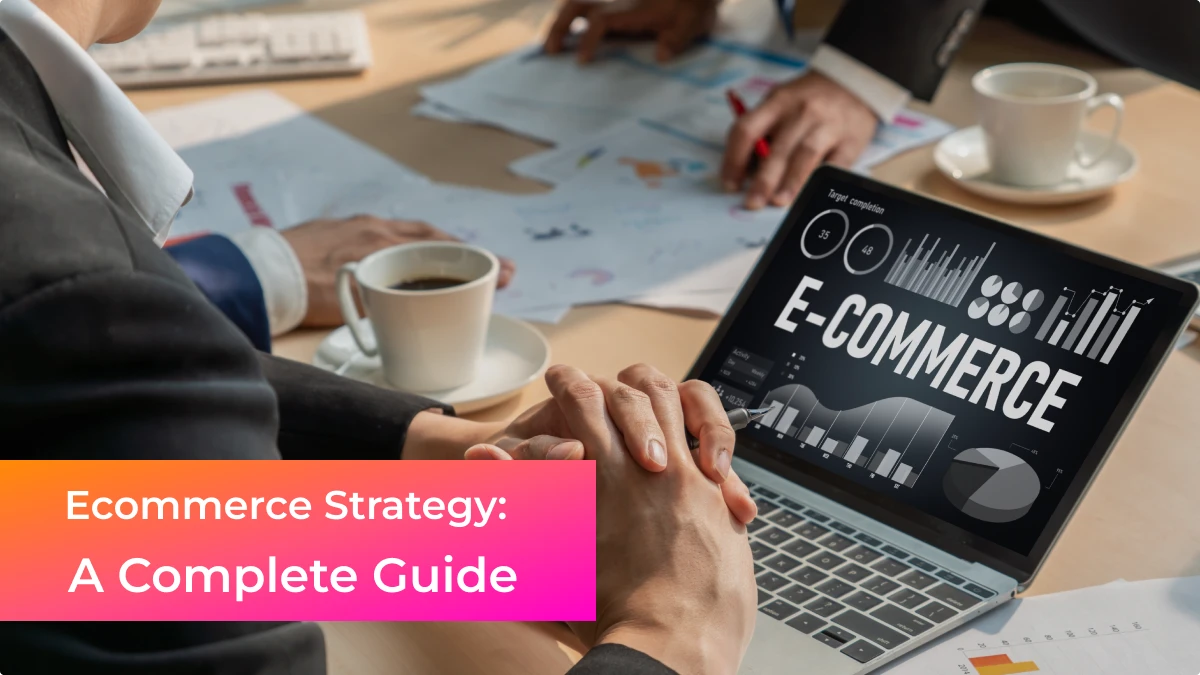
Over the years, ecommerce has continued to change and evolve. Many companies sell online to reach more customers and generate more sales. But the thing is, ecommerce success isn’t just about moving things online. You need a solid ecommerce strategy for consistent growth and to stay ahead of your competitors. You need a solid ecommerce strategy for consistent growth and to stay ahead of your competitors.
This article will discuss everything you need to create and carry out a successful ecommerce strategy plan. It’s got steps, tips, and examples to help you build a successful and profitable ecommerce store.
What is Ecommerce Strategy?
An ecommerce strategy is like a game plan for online sales. It helps companies find customers, sell products, and ensure consumers have a great experience. It includes setting goals, knowing who your customers are, and choosing how to market your products. Good ecommerce strategies are clear and reliable and enable companies to succeed in the world.
Why Ecommerce Strategies are Important
In this rapidly evolving world, having a clear ecommerce strategy is not only a good thing. It is essential to survive and grow in online business. Let’s take a closer look at why an ecommerce strategy is so important in today’s market.
Market Expansion
Strategies enable companies to reach people all over the world. Unlike traditional brick-and-mortar stores that are limited by geographical areas, an online presence provides a global reach, opening up new markets and growth opportunities.Stable Long-Term Growth
This signifies that a company intends to grow smoothly throughout time, with no unexpected ups and downs. Rather than experiencing quick but unpredictable growth, stable long-term growth emphasizes consistent improvement and expansion. It's like constructing a sturdy house on a solid foundation, guaranteeing that expansion is sustainable and manageable.Stay Ahead Of The Competition
Businesses must constantly innovate and develop to preserve a competitive advantage. Staying ahead of the competition entails being the industry leader by providing superior products, services, or experiences than your competitors. It entails the identification of your competitors' strengths and shortcomings and devising strategies to exceed them to acquire new customers and increase your market share.Plan Inventory
Inventory refers to the goods or products that a company has for sale. Planning inventory is carefully managing and controlling the amount of inventory on hand to meet consumer demand while avoiding overstocking or running out of stock. It's similar to maintaining just enough ingredients in the kitchen to make meals without wasting food or running out of supplies. Effective inventory planning ensures that a company has enough products to fill requests without tying up too much capital in surplus inventory.Minimizing Costs
Every firm has expenses such as rent, utilities, staff, and materials. Minimizing costs entails identifying ways to minimize expenses without losing quality or customer happiness. To increase profitability, operations must be optimized, better deals with suppliers negotiated, and needless spending eliminated. Consider removing unneeded spending from your household budget to save money and increase your revenue.Improving Customer Experience
Providing a seamless and personalized shopping experience is critical to customer satisfaction and loyalty. E-commerce strategies focus on improving the website usability, checkout process, and customer support so that all interactions with the brand are positive and memorable.
How to Build an Ecommerce Strategy?
Developing an effective ecommerce strategy is crucial for any business that wants to succeed in the competitive Internet market. Here’s a step-by-step guide to help you develop a comprehensive ecommerce strategy that suits your business goals and target audience:
Understand Your Customers
Get to know your internal and external target audience by conducting comprehensive research. Research demographics, interests, and purchasing behavior to understand what motivates your customers. Use tools like Google Analytics, customer research, and social media to listen for valuable information that will support your ecommerce strategy and help you better serve your customers. 
Conduct Competitor Research
Take a close look at your competitors to understand their strengths, weaknesses, and market positions. Analyze websites, social media, and customer reviews to identify opportunities for differentiation and growth. By learning from your competitors, you can improve your ecommerce strategy and get ahead of the competition.Develop Your Unique Selling Proposition
Stand out in the ecommerce world by defining the Unique Selling Proposition (USP) that differentiates your company. Your USP should clearly state what makes your product or service unique and valuable to customers. Whether it's exceptional quality, unbeatable prices, or excellent customer service, your USP should resonate with your target audience and increase customer loyalty.Define Your Goals and Objectives
Before diving into your ecommerce strategy, take the time to define clear goals and objectives for your business. This may include increasing product visibility, increasing customer loyalty, or increasing sales. By knowing your goals in advance, you can adapt your strategies to achieve specific goals and ensure alignment with your team.Choose the Best Digital Marketing Tactics
Use digital marketing strategies to promote your ecommerce business and attract customers. Explore strategies like search engine optimization (SEO) to increase your website's visibility, content marketing to connect your audience with the right content, and social media marketing to connect with customers and build brand awareness. Consider trying paid advertising to reach your target audience and generate traffic.Identify Tools and Tech You’ll Need
Explore the tools and tech stack you’ll need to successfully execute your ecommerce strategy. These may include ecommerce platforms, consumer applications, and analytics tools. A team of professional developers can help you get a head start here. Evaluate your budget, resources, and capabilities to determine the best way to implement your strategy and achieve business results.
Types of Ecommerce Strategies
There is no one-size-fits-all solution when it comes to ecommerce. Instead, businesses can choose from a variety of ecommerce platforms that fit their unique goals, demographics, and industry. Here are some types of ecommerce strategies:
Enable Smart Filters
In this fast-paced world, customers value convenience and functionality when shopping online. Consider applying advanced filters to your ecommerce site to improve their experience. Filters save time and effort by allowing customers to quickly refine their searches based on specific criteria, such as size, color, and design.New Product Showcase
Keep your customers happy and excited about your offerings by connecting them with more newcomers to your website. Whether it's seasonal collections or the latest additions to your product list, showcasing new products can capture the attention of new and existing customers and encourage them to browse and purchase.Here is a screenshot of Amazon showcasing new products.
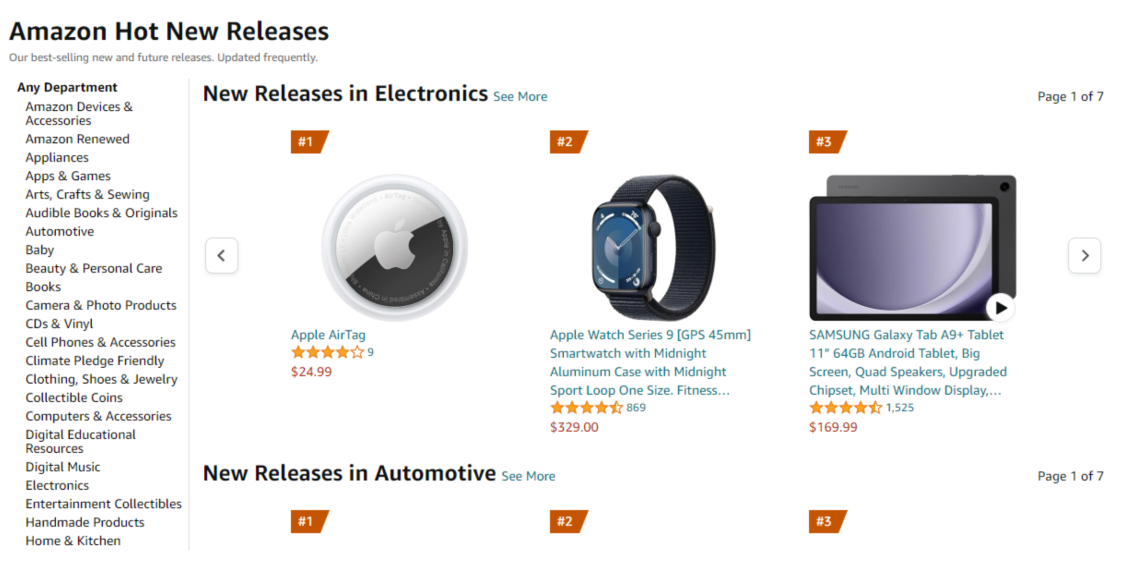
Change Payment Methods
Make it easier for customers to complete their transactions by offering different payment methods. Consider accepting digital payment methods like PayPal and Venmo, as well as traditional methods like credit and debit cards. Explore alternative payment options such as buy now, pay later options, and cryptocurrencies to meet different customer needs.Gift Cards Program
Gift cards are a type of prepaid voucher containing a certain amount of money that can be used to make purchases at a specific store. They are useful because they allow the buyer to choose what he wants and are easy to use. You can buy these in a variety of shapes, and they're a popular choice as a gift because they're so versatile.Customers with gift cards usually spend 32% more than gift card value. Gift cards are a great way to increase your store’s sales as people love gifting. You too can set up a gift card program in your store with 99minds.
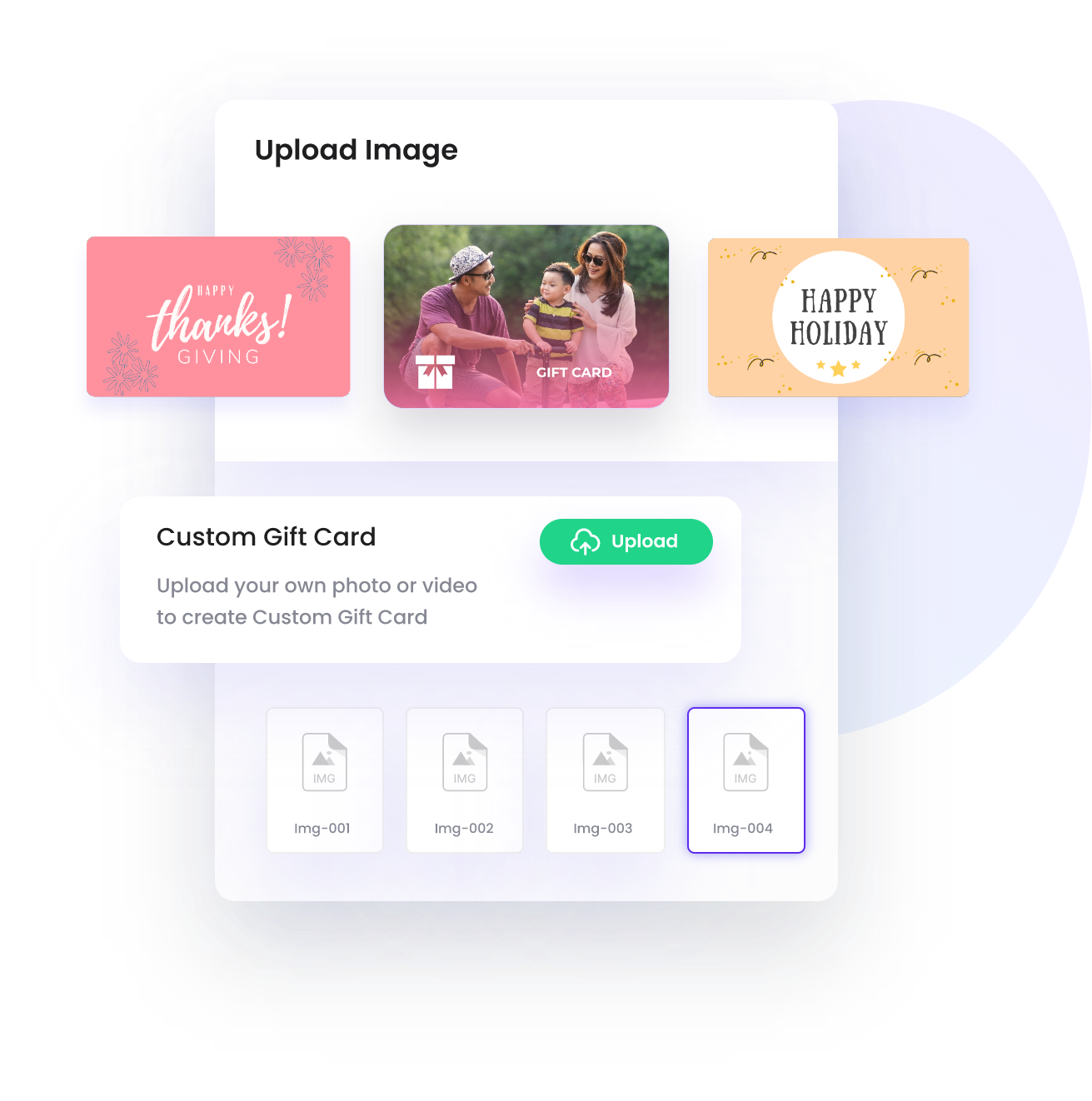
Create a Sense of Urgency
Increase conversions and encourage customers to take immediate action by incorporating urgency into your marketing efforts. Short-term discounts, limited product announcements, and persuasive copy that emphasizes the importance of acting quickly can encourage customers to buy faster.Store Credit
Store credits are credits that a store gives to a customer when a purchased item is returned. The customer can use this credit to purchase new products from the same brand later.
Store credits help ecommerce businesses build recurring users and regain their users' trust.
You can also set up a store credit program on your store.
The store credit functionality at 99minds makes credit administration easier for online firms. It’s flexible, automated, and works smoothly with existing systems. It’s easy to use and even provides powerful analytics to make educated decisions. Overall, it simplifies processes and enhances the customer experience.
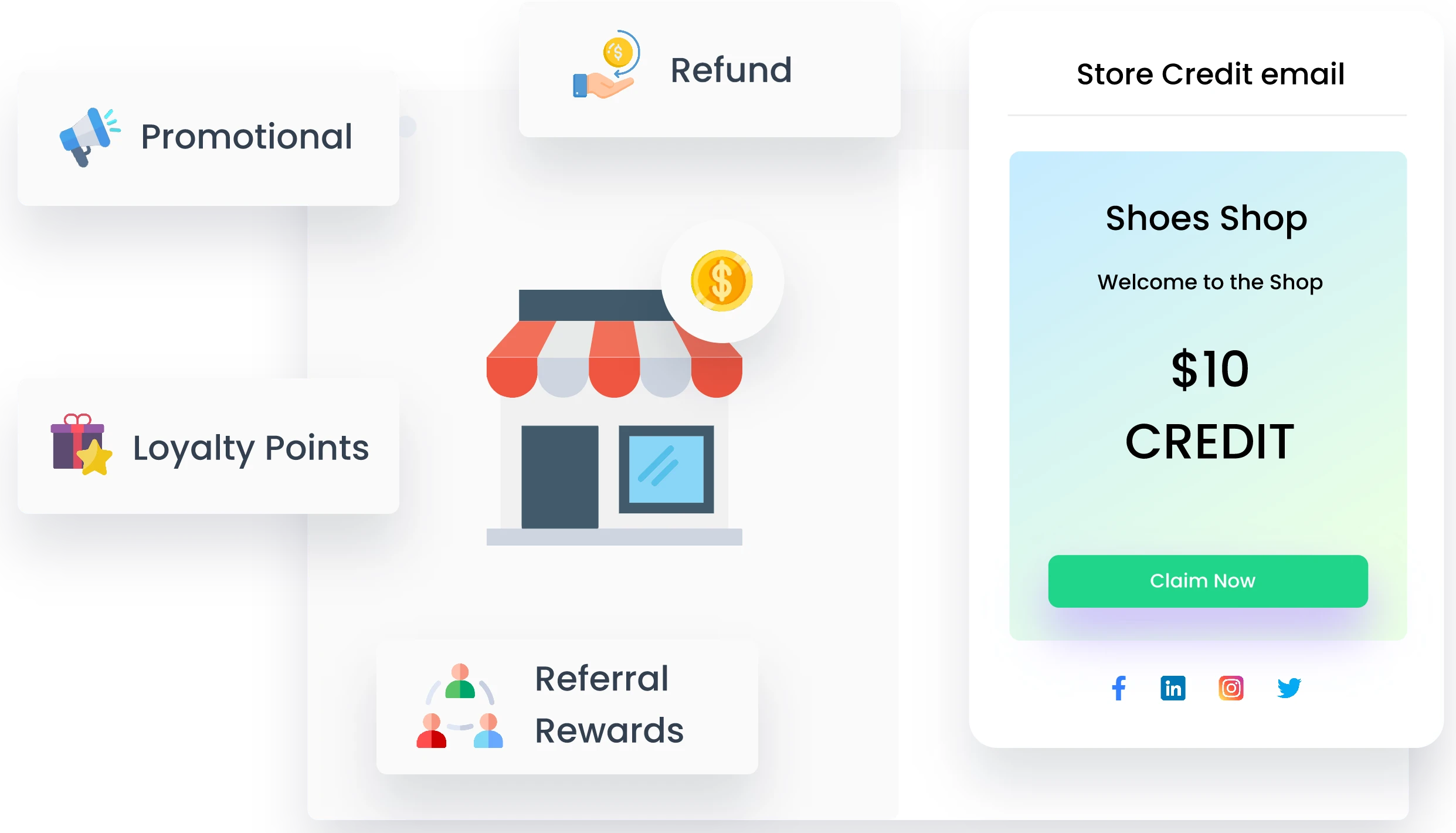
Email Marketing
Use email marketing to build relationships with your clients and boost revenue. Develop email campaigns that focus on providing useful information, announcing promotions, and increasing leads. Use custom landing pages and automation tools to simplify your email marketing and increase engagement.Offer Discounts and Special Offers
Increase your sales and customer loyalty by offering discounts and special offers on your products. Optimizing your website distribution strategy and marketing channels to attract attention and increase purchases. Consider implementing loyalty programs to reward returning customers and encourage future purchases.Cross-Sell
Cross-selling is another effective ecommerce strategy to increase the order value. Suggest additional products or premium upgrades to improve customer experience and drive more sales. You can improve customer interaction and increase sales by implementing these cross-selling techniques:
- Identify complementary products: Establish which goods or services go well together organically. Look for products that address comparable issues or are frequently purchased together.
- Offer personalized recommendations: Personalized cross-selling recommendations that take into account the particular demands and preferences of each consumer are preferable to generic ones. This may make a cross-sale more likely to be successful.
- Promote packages and bundles: Provide packages that offer several goods or services at a special price. Customers receive more value from this and are encouraged to purchase further things.
- Highlight savings and benefits: Make sure to express the advantages of acquiring upgrades or other items. Stress how these products improve customer satisfaction or result in long-term cost savings.
- Provide incentives:Provide discounts, freebies, or loyalty points as inducements to customers so they will add more things to their order.
- Monitor and analyze results: Keep an eye on the effectiveness of your cross-selling initiatives at all times, and use data analysis to pinpoint areas that require improvement. Keep an eye on indicators like average order value, conversion rates, and customer reviews.
Up-Selling
An upsell is when a seller convinces the customer to buy a higher-priced item instead of the one they have already selected. To up-sell brands need to tap on their user psychology. Here are some promotional methods that can improve customer interaction and increase sales:
- Highlight valuable features:When interacting with customers, emphasize the unique features and benefits of premium or upgraded products. Explain how these features will better meet their needs or improve their experience.
- Offer personalized recommendations: Use customer data and purchase history to provide personalized recommendations for updated products that match their needs and past purchases. Personalized ideas resonate with customers and lead to higher conversion rates.
- Display limited edition or special items: Create a sense of surprise and specialness by displaying limited edition or special products during customer interactions. Highlighting these special items creates interest and encourages customers to upgrade their purchases.
- Offer bundles with upgraded options: Offer bundles that contain a variety of upgraded products at a discounted price. By combining complementary items, you can encourage customers to improve their purchases and increase the total order value.
- Maximize long-term value and savings: Show the long-term value and savings associated with buying cash products. Highlight other features, durability, or benefits that warrant a higher price and show how they will save customers money in the long run.
Use Social Branding
Build your customers' trust and credibility by displaying reviews and testimonials from satisfied customers. Displaying genuine testimonials from trusted sources can build trust and encourage visitors to purchase.Loyalty Program
Increase customer loyalty and retention by implementing a loyalty program that rewards repeat purchases. Offer special prices, coupon cards, and perks to encourage customers to return to your store. Communicate the benefits of your loyalty program and make it easy for your customers to participate and enjoy rewards.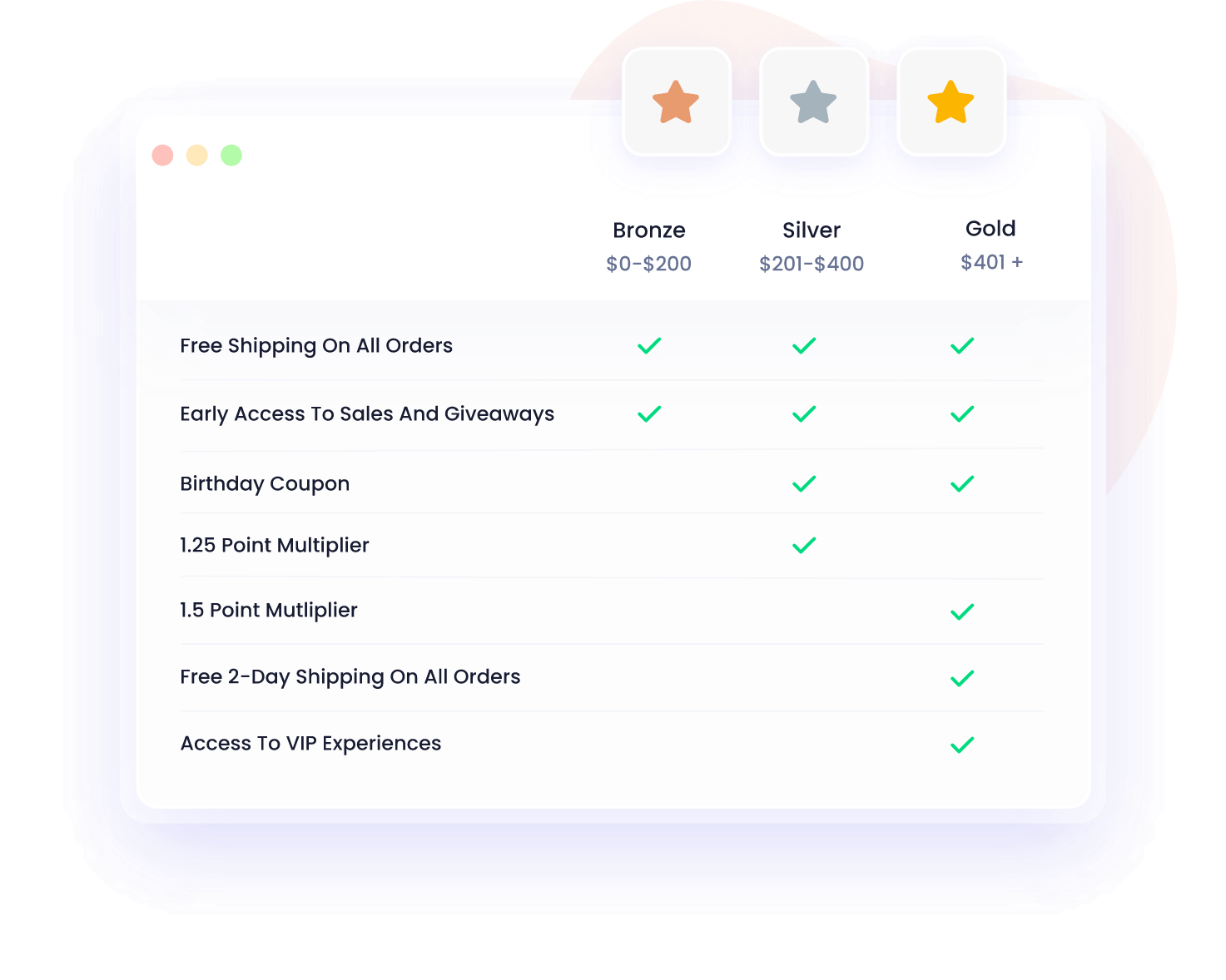
Free or Discounted Shipping Offer
Address one of the most common reasons for bike abandonment by offering free or discounted shipping. You can increase conversions and improve the overall customer experience by reducing customers' shipping costs. Track the impact of your referrals and, if they are successful, consider making them a permanent part of your strategy.SMS Marketing
As per a report by Grand View Research, the SMS market is expected to increase at a rate of 20.3% and reach $12 billion by 2025. SMS is a direct business line, used by almost two-thirds of the world's population.
Another interesting fact from Customer Engagement Insider highlights; that only 39% of organizations use SMS marketing, although it is profitable and has 7.5 billion mobile subscribers. SMS is used by ecommerce sites to increase sales and engagement by way of support, upselling, cart recovery, and promotions.
PPC Advertising
With pay-per-click (PPC) ads, you compensate Google or Facebook for driving visitors to your website. You will be charged a particular amount each time a user clicks on your advertisement, as the name suggests.You can set a bid for several kinds of traffic while operating a PPC campaign; for instance, you could divide your bids according to the user’s device or location. In industries like plumbing, using Google Ads for plumbing companies allows businesses to focus on local customers, maximizing their reach. To retarget customers based on particular activities, like visiting your website or leaving a shopping basket empty, you can also execute PPC campaigns.
Search Engine Optimization (SEO)
The technique of increasing a website, blog, or online store's visibility in Google and other major search engine results is known as Search Engine Optimization or SEO.Content Marketing
Creating engaging social media posts, and videos for your audience is the foundation of content marketing. Make sure that the content is distributed on all social media platforms and is relevant to your brand. Content marketing is needed for several reasons:
- Increases brand awareness: Consistently developing and sharing content that resonates with your audience improves brand visibility and recognition.
- Increases website traffic: Valuable content attracts people via search engines, social media, and other methods.
- Educates and informs: Content marketing teaches your target audience about your business, products, and services, positioning you as a credible authority.
- Lead generation: Engaging content piques the curiosity of potential customers, motivating them to share contact information for future nurturing.
- Build relationships: By meeting your audience's wants and interests, you may develop long-term partnerships and brand loyalty.
- Supports SEO efforts: Creating optimized, high-quality content boosts search engine rankings and increases online visibility.
Affiliate Marketing
Using other companies or individuals to promote your goods or services on their websites is known as ecommerce affiliate marketing. An affiliate receives a commission when a visitor they suggested makes a purchase. Affiliates frequently utilize paid advertising, email marketing, content marketing, and other strategies to send customers to their product pages.
With 16% of ecommerce purchases coming from affiliates, affiliate marketing might be a terrific method to grow your ecommerce marketing approach.
Social Media Marketing
Given the common use of social media in our lives, it should come as no surprise that it has become an essential marketing tool for eCommerce and retailers alike. Brands use a variety of strategies to promote their goods on social media, including:
- Giveaways and competitions: Events where consumers can participate to win gifts or obtain complementary merchandise.
- Product launch:Making public the introduction of a fresh good or service.
- Brand introductions:Using social media to raise awareness of a brand and provide an introduction.
- Sale announcements:Providing exclusive deals and discounts to increase sales.
- Surveys and polls:Interactive materials designed to gather client opinions and ideas.
- Encourage user-generated content:User-generated content (UGC) initiatives are campaigns that encourage consumers to share their product or brand experiences on social media.
-
Influencer Marketing
As an online retailer, attracting new customers and establishing your reputation are two of your biggest obstacles. Influencer advertising is when brands collaborate with popular social media users to promote their products or services to a larger audience. You may increase traffic while concentrating on your efforts on social media, email, SMS, and other channels when you collaborate with an influencer who shares the same values as your business.
Set Up a Newsletter
In ecommerce, it’s easy to build a good email list. Start by creating a pop-up newsletter on your website whenever your customer comes on the website. Entice them with a discount, for example, “get 10% OFF”. This strategy works like a charm and in no time you will have a great email list.
- Campaign for festive, or seasonal highlights.
- New product launches
- Upcoming sales
Set Up Customer Support
Providing prompt and effective customer service is the key to gaining and keeping consumers. One of the greatest methods to achieve that is through live chat. According to a poll conducted in 2023, 72.3% of consumers are happy with the live chat assistance they receive.Additionally, you can send proactive messages to your visitors with modern live chat platforms. For instance, you may put up a message on product pages enticing visitors to subscribe to your email list in exchange for a discount on the item they are currently viewing.
Personalize Customer Communication
Regardless of the type of campaign you're working on, personalizing your messaging can help you produce better outcomes. The simplest way to personalize material is to just include the recipient's name. A meticulous approach to audience segmentation is also necessary for effective customization. One possible use case would be to develop a retargeting campaign for those who have recently been to your website.Create a Referral Program
A well-liked ecommerce marketing tactic is rewarding customers for referring others to your store with bonuses, which might encourage current customers to do the same. A happy customer is sure to refer your product to their friends or family and what's better is to reward them for it! You can create a solid referral program with 99minds.
Conclusion
In the ever-evolving world of ecommerce, having a well-defined strategy is critical to success. From defining your goals and understanding your target audience to implementing digital marketing strategies and optimizing your user experience, each step plays a key role in driving growth and increasing revenue. By following the comprehensive guidelines in this article, businesses can build a solid foundation for their ecommerce operations and stay ahead of their competitors in today’s competitive market.
Frequently Asked Questions (FAQs)
What Is An ecommerce Strategy?
An eCommerce Strategy is a plan businesses use to sell stuff online. It includes how they market, sell, and serve customers on the Internet to make money.
How To Use An ecommerce Strategy To Increase Sales?
To boost sales online, businesses should make their eCommerce Strategy effective by making their website easy to use, showing up on Google, using social media, offering deals, talking to customers, and ensuring it works well on phones.
What Are The Types Of ecommerce Strategies?
There are a few types of eCommerce Strategy approaches: selling on big websites like Amazon, selling directly to customers from your website, offering subscriptions, using both online and offline stores, selling without keeping stock (dropshipping), and selling on social media.


